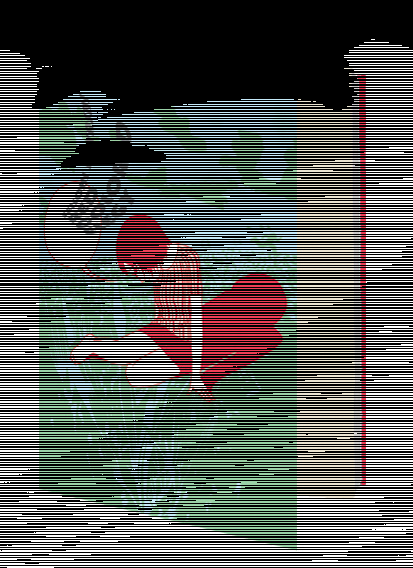An animator is trudging forward, doggedly trying to avoid his companion, who’s attempting to convince him to ditch his animation job. “That production company pays peanuts!” says the companion, who has the white gloves and rubbery posture of a Disney character, but no head—his blood sloshes about in the gaping ring of his turtleneck collar. On the next page, the animator commits bloody murder, reducing his hectoring partner to a lone deflated glove, snagged on a barbed-wire fence.
That’s more or less how it goes in Red Colored Elegy, a graphic novel by Seiichi Hayashi, originally published in Japan in the early ’70s and now receiving its first English translation. The emotional thrust of the scene is clear, but it’s expressed through strange, externalized details. Hayashi was trying to import the disjunctive innovations of French new-wave cinema to the comics page. The result is a condensed visual poetry that still feels avant-garde nearly forty years later.
The story concerns the relationship of the animator, Ichiro, and his girlfriend, Sachiko. They live in a shabby flat; there’s an overhead lamp whose naked bulb spotlights the dazed pirouettes of flies, a futon, a low table, a black ashtray on the floor. The main decoration in the room is an endlessly shifting rubbish of animation pages. They both want more than what they’ve got. Ichiro wants to make a living drawing and writing comic books; Sachiko repeatedly refuses her parents’ attempts to arrange a respectable marriage for her.
All the characters in the book seem perpetually in danger of being obliterated—by intrusive word balloons (or by the emptiness of thought balloons, stalled over their heads like blown eggs), by erasures (sometimes bits of their faces disappear, a nose and mouth gone, sometimes even the eyes, too, leaving only a ragged stain of hair), by the landscape. Red Colored Elegy is full of the sorts of vignettes that are common in Japanese comics, panels that set a stage by alighting on details that are void of human presence. There are full-page street scenes where Hayashi’s wan, cracks-on-porcelain lines scrape their way through thick clouds of hatching and massed globs of black ink. These lonely panels delineate how ramshackle bits of architecture fare against the convulsions of the sky.
There is a crucial scene at a beach, where Ichiro takes Sachiko in an attempt to connect. After several pages of inarticulate fumbling, they prove unable to sync up with each other. When they step up to the edge of the sea together, we’re shown the sea, but not them. The two-page spread of the ocean isn’t merely a notation of their surrounding atmosphere—there’s something oppressive about it, and about the fact that their figures are excluded. The world doesn’t need them.
A recurring visual element that Hayashi uses is a flaring meteor. At various points in the book it streams through the wheels of a bike, it bursts in a corner while Ichiro and Sachiko have sex, it streaks outside a window as Ichiro pours Sachiko a glass of water. Part of the agony Ichiro and Sachiko endure is the feeling that things have gone irreparably wrong; every fresh dagger to the heart feels like a pain that had lodged there permanently, eternally. About that, at least, they needn’t worry. There is no fixed constellation for them—they live under the collapsing zodiac of the falling star.
Format: 240 pp., cloth; Size: 8.5″ x 6.3″; Price: $24.95; Publisher: Drawn & Quarterly; Editor: Tom Devlin; Print run: 8,000; Book design: Tom Devlin; Font design: Rich Tomasso; Translated from the Japanese by: Taro Nettleton; Magazine that contained its initial serialization: GARO; Years of serialization: 1970–71; Number of hit folk/ pop debut singles inspired by and named after Red Colored Elegy: one; Number of panels that don’t contain an image of a human being: eighty-seven; Representative sentence: “She’s somewhere getting rained on now.”





